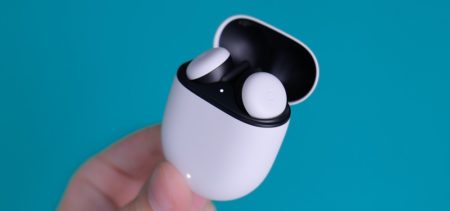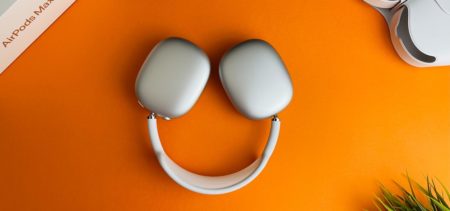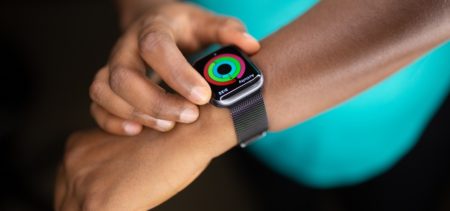The technologies envisioned for the near future are based on meeting people’s needs, advancements in technological development and, ultimately, the public’s reaction. Somewhere between demands, costs, regulations and general feedback, lie the chances of innovation when confronted with reality.
Of course, beyond this organic equation there are other push factors, like investments in promoting a certain technologies, or access to the bigger picture in the field of connected technologies. Individually, some new prototype may not seem as big of a breakthrough, but in view of other technologies to come, it might be a very important step.
Based on the latest trends, we will try to estimate the adoption rates for a few innovative technologies. Some of them have a common feature – the “smart” characterization. Others have to show their inter-connectivity yet.
This week’s contestants are three technologies many of us are familiar with:
SMART CLOTHING
Evolving from wearables, smart clothing aims to provide comfort enhancements. Unifying previously disparate functions and being easier to carry/wear, it serves in healthcare, sports and personal comfort.
• Current status
Smart technology applied to clothing can track physical rates (heartbeat, breathing, calories intake), carry and monitor various devices, or control temperature levels.
Products like Lumolift (posture improvement) or Glofaster (cycling lights) explore possibilities in this direction.
SCOTTeVEST features special pockets that serve as devices’ chargers.
The LifeBEAm gear offers body monitoring.
So does Hexoskin, a body metric system with several sensors for measuring changes during sleep, training or simply during the daily usual activities.
The University of California engineering project called ATTACH tries to regulate temperature for individuals via printable electrodes applied on fabrics. Energy saving and human convenience could meet via this project.
• Near Future
Project Jaquard is a collaborative initiative in which Google’s Advanced Technology and Projects (ATAP) combines with Levi’s in trying to produce touch-pad style capabilities fabric.
Printable 3D sensors are also being developed – and may contribute to accelerating the smart clothing expansion.
• What’s holding it back?
We are talking about clothes – so comfort and looks are the main requirements. The concepts may be revolutionary, but the weight and aspect of the gear should also support their technical qualities. Costs also restrain a large-scale success. When the smart fabrics will be achieved and perfected, it should be easier to implement the actual concepts, as many others to come.
• Public reaction & Pushing degree
The public reaction – imprecisely defined yet. Fitness and healthcare seem to be the most welcoming fields, while individual adoption may stall due to high costs. The publicity is still at the beginning.
SMART CARS
Also including electric cars and driver-less cars – this technology tries to establish the car of the future: connected, environmentally friendly and automated.
• Current status
Some of these cars are already in use (Smart Automobiles, a Daimler AG division), others are in various testing and development stages.
The Apple iCar is still to be made – negociations with BMW could resume after stalling due to Apple’s alternative idea of producing a passenger car independently.
The Tesla cars (electric) involve “full production to fulfill expected demand (that) could take up to 2020”, according to tesla’s CEO, Elon Musk, in reference to Model 3. For the previous Model X, deliveries are to begin in September 2015.
Some of the earlier Model S cars are equipped with AutoPilot, but the features, available only in vehicles manufactured from September 2014 onwards, aren’t yet activated.
Elon Musk has officially announced testing this feature in view of a limited release on August 15. More recent news on beta testing – here.
Meanwhile, Google owns its brand car company since 2011 – Google Auto, which manufactured its 23 Lexus autonomous cars. The company started testing its self-driving cars on public roads in June 2015 and already entered a few publicized road incidents.
• Near Future
The race for the functional and price-accessible smart car is open, and various contestants are trying to reach the finish line as soon as possible. Safety is an important feature and the responsibilities are high, therefore the companies maintain a responsible and calculated pace, trying to avoid flaws and errors in the process.
• What’s holding it back?
The new car hacking exploits proved that smart systems could be taken over and manipulated via cyber-attacks. Solving this security vulnerability might be crucial, for producers and customers likewise.
Costs, road safety, passenger safety and cyber security would be the main sensible issues in perfecting the smart car concept.
The existing regulations should also change accordingly – driver-less vehicles request a different liability approach.
• Public reaction & Pushing degree
The public reaction builds on the pre-existing environment concerns and on the need for environment protection. Alternative energy sources are a trending preoccupation. The smart car concept is widely well received and pre-orders have been issued in view of full production for many of the prototypes.
Publicity is well represented when it comes to smart cars.
DRONES
Also entitled UAVs (Unmanned Aerial Vehicles), drones are digital gadgets that can provide access to various areas. Currently used within some limits in monitoring activities, UAVs make their way into commercial delivery, professional filming and other activities.
• Current status
This technology is functional and still evolving. Smart farming is enabled by exempts from general regulations when it comes to privately owned land. Many farms are already using drones in monitoring various environmental or crops parameters.
The first medicine delivery by drone just took place in Virginia and it was successful.
Drone regulations are debated in view of adoption. The industry has certain proposals and demands, while the FAA currently allows commercial drone flights only individually.
• Near Future
Once the frictions resolve, drone delivery, monitoring by drones, smart farming and other possible applications will flourish.
• What’s holding it back?
Security issues concern those who are reluctant when it comes to fully approving drone usage. Their capability of reaching areas unattainable by other devices poses a threat, since UAVs could be used in illicit maneuvers. Combined with other technologies, drones may turn into weapons. Regulations are to be adopted and the discussion partners strive to reach common ground.
In New Zeeland the more relaxed rules allowed this technology to spread, but changes brought tighter rules.
The drone incidents in wildfires din not help either. On the contrary, exacerbating dangerous situations lead to the adoption of very strict penalties in San Diego.
• Public reaction & Pushing degree
The public reaction is very positive in the case of drones. They have entered public consciousness via their private usage concept, overlapping radio-controlled toys. From flying radio-controlled helicopters to drones it was but a very small yet glorious step. Almost everybody wants to have such a device at their disposal. Adding cameras that allow aerial filming only made people more eager to maneuver their personal luxurious gadget.
There are also specialized drone-enthusiasts, which may not use drones in their professional capacity, but have found means to enhance their hobby or particular activity using these gadgets: photographs, researchers, wildlife observers and various others.
And ultimately, enterprise drone usage is a major opportunity waiting to be tapped – we have gotten a schematic idea of what the drones’ capabilities may be, and so have many companies waiting to employ these capabilities in their activity.
As for the publicity, whether we are hearing from Facebook about their latest drone deployed Internet or from the film industry, it’s a permanent buzz about these fascinating devices. The technology world is anxious to get more freedom from the upcoming regulation covering drone usage, and until then, they make sure this subject stays on everyone’s mind.
WINNER TECHNOLOGIES:
The drone-related technologies are the most likely winner because they are on the verge of taking over the world. The technical side is perfected and may be improved in new interesting ways, there are low-end products, as well as high-end, and with all the talk about them, drones are bound to know the largest increase in adoption over the next few years.














































